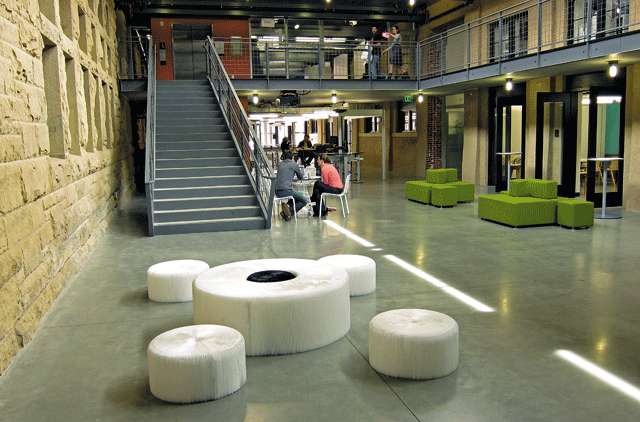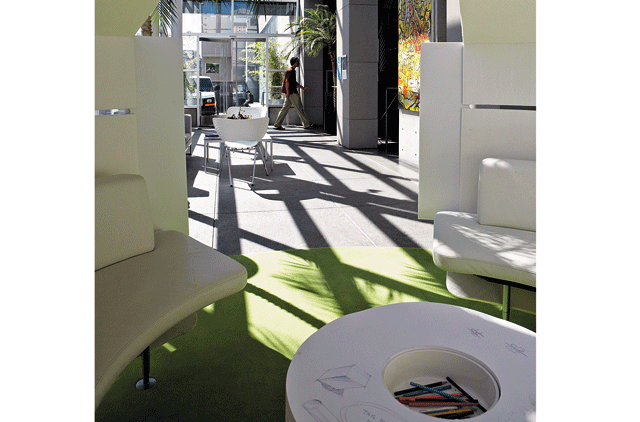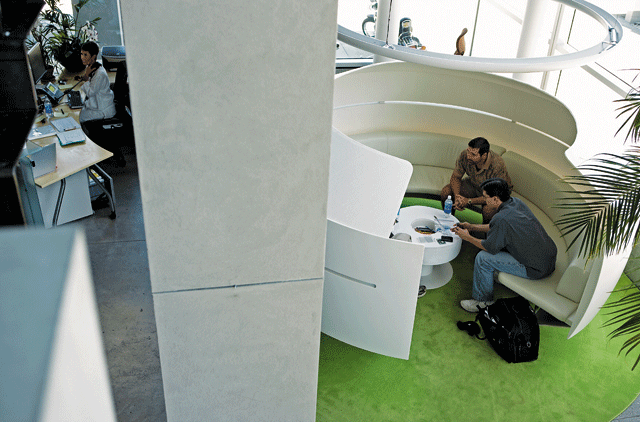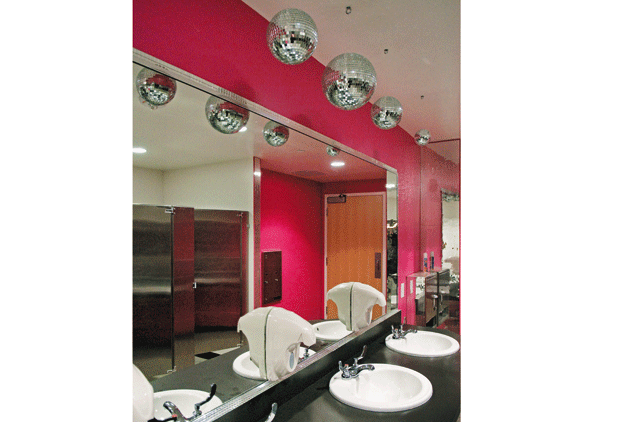
Kelley likes to ride in his bicycle from the Palo Alto offices of IDEO, the successful global design and innovation company he co-founded in 1990, to the Stanford campus, where he directs the university's fledgling Hasso Plattner Institute of Design, also known as the d.school. The new building made of glass, steel and concrete opened its doors to students earlier this year.
The school's mission is interesting and unique. Graduate students from a grab bag of disciplines - business, engineering, social sciences and education - are teamed with companies such as Procter & Gamble, Electronic Arts and Visa, to face business challenges in the real world. IDEO staff members work with these graduates, acting as adjunct faculty not only to help the companies but also to train this next generation of business leaders as ‘Design Thinkers'. The aim is to create graduates who will be the innovators of the future, like Joseph Kosinski, who made his feature directorial debut this year with the Hollywood film Tron Legacy. Kosinski was one of Kelley's students.
It was the successful businessman and SAP founder Hasso Plattner who understood Kelley's mission. And he provided the much needed funding for the school. "This man always believed in a human centre of design," says Kelley, the expression on his face changing, his eyes sparkling. "He figured out that the best way to design satisfaction is to absolutely live the customers thinking, to be in their company," Kelley continues, "to talk to them when they have lunch, to walk them to the cars when they go home at night. So Plattner knows exactly what his customers like or what they don't like. And that was the reason why Plattner, when I proposed the concept of an institute in Stanford teaching Design Thinking, founded it very quickly. He is the reason why this institute exists today!"
But what is Design Thinking? It is a methodology used to create better solutions to the challenges facing business and society. It starts with people and applies the tools of design like prototyping, experimentation and storytelling to deliver new breakthrough innovations. Design Thinking is based on
the concept that exceptional innovations happen when people with different backgrounds get together and scrutinise problems. For example, the largest health maintenance organisation in the US was developing a long-range growth plan and wanted to attract more patients and cut costs. So they hired IDEO, which together with the health organisation's nurses, doctors and facilities managers teamed up with IDEO´s social scientists, designers, architects and engineers and observed patients as they made their way through the medical facilities. At times, they also played the role of the patients themselves. So the health organisation learnt from IDEO how to design a better human experience rather than buildings. The product design firm taught their customers the art and science of creativity.
The concept of Design Thinking brought Kelley worldwide fame and made IDEO very successful. Today the company has more than 550 employees in eight offices on three continents and guides its customers in diverse areas such as making cost savings, revamping nursing shifts and rethinking airport security checkpoints. IDEO's clients include Procter & Gamble, Marriott and Pepsi, among hundreds of others. Kelley believes that all of us have a creative side, and that it can flourish if you spawn a culture which encourages it. "That's the reason why the idea of Design Thinking came about, because many people have no confidence and belief in themselves. They really don't think of themselves as creative people," he explains. "But everybody is used to creativity, because everybody has been creative as a child. So you just have to practise it. The idea is to build up the use of not only the left side of your brain but also the right one. And by learning Design Thinking you can do this!" Upon entering the d.school the culture of the place presents itself - every element is meant to stir innovation and to inspire students to look for better ideas. A physical prototyping lab sits next to its digital counterpart to facilitate building, photographing and printing. In the main classroom area, walls can be shifted optionally and whiteboards invite people to contribute an idea to somebody else's project. The spaces are meant to be reworked daily, if not hourly. And the school's sessions are wild, woolly and fun - for example jumping up to scribble ideas on a whiteboard and creating as many as 100 ideas in one hour.
"That's what makes it a success," Kelley explains. "It's the group that does it - one person builds on another's idea and together you come up with something surprising!"











